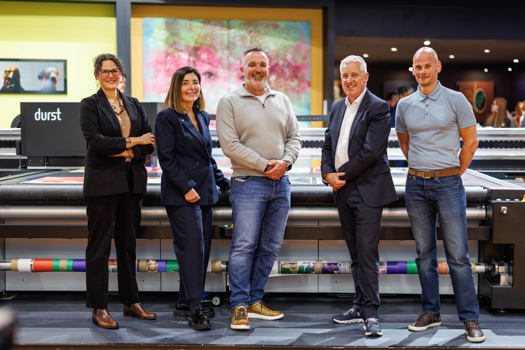The Department for Education expects to raise £2.8bn this year through the introduction of the Apprenticeship Levy, which is paid by larger employers, but its own figures show a sharp drop in uptake of apprenticeships.
The total number of new apprenticeship starts in England in the three months from August to October 2017 was 114,400, 49,800 fewer than a year earlier, a 30% drop.
No doubt this is partly down to the fact that there is something of a knowledge gap: many companies simply do not seem to understand if the levy applies to them – according to a CIPD survey, 22% of employers don’t know whether they need to pay the levy or not.
Among printers, many of which are SMEs, the levy may not seem much of a concern – but those who represent the 98% of businesses exempt from the levy are worried that they may not be fairly funded compared with their larger, levy-paying counterparts.
“Small businesses will be essential to the government reaching its target by 2020,” says Mike Cherry, national chairman of the Federation of Small Businesses. “We are concerned about the quality and relevance of government support available to small businesses that don’t pay the levy to take on apprentices. The information landscape is still a confusing one for a small business to navigate so many are put off from beginning their apprenticeship journey.
“Introducing the Apprenticeship Levy has led to a change in employers’ offerings. The government needs to continue to drive expansion in apprenticeships to ensure that we don’t see a continuing decline.”
Lack of communication and clarity are cited repeatedly by industry bodies as a major roadblock to increasing apprenticeship uptake.
Louisa Bull, national officer for the print sector at union Unite, suggests this might be a response to the nomenclature: “The word ‘apprenticeship’ devalues the whole programme as something less than real work, which simply is not true.”
But roadblocks come in different forms, as Bull has found as she, the BPIF and the Printing Charity have been at loggerheads with the government to finalise the print sector’s Trailblazer programme that would allow apprenticeships to be designed by employers and tailored to the needs of the print industry.
She says: “It seems that once we reach an agreement on each stage, the government changes the rules again – as with the introduction of the levy – and it sets our talks back.
“Most apprenticeships as they stand are not fit for purpose. This would allow us to create our own standards to fit the needs of apprentices and the industry.
“Things are very close to fruition now, but it is taking a lot of commitment and it is very frustrating that the government does not recognise the need to get this sorted.”
There have been some small victories, such as when print representatives won a dispute with the government to keep pre-press, printing and finishing as separate options in the programme in June last year.
Meanwhile, organisations like the BPIF and the Printing Charity are working to make a wealth of opportunities available for those wanting to get started in a trade.
Initiatives supported by the Printing Charity include bindery and papermaking apprenticeship programmes, a fund for diversity in journalism and a post-graduate bursary scheme. It also runs the annual Print Futures Awards to offer apprentices further funding for training and enrichment.
Chief executive Neil Lovell says: “Print Futures gives apprentices opportunities to show how extra funding might help them, whether for learning materials, travel, courses or anything.
“We need to look after the relationship between those who run the schemes and the firms that take on apprentices. Apprentices are the bedrock of our industry and we are always looking at projects to support.
“Our sector has a lot of needs regarding its future workforce and, if we want help from the government to improve this, we need to speak as a single, united voice – we need to make a compelling case to keep young people coming into our high-tech, hands-on sector.”
A fundamental detriment to rigid government expectations, and key to inconsistent numbers of apprentice participation in print, is the unforeseeable fluctuation of the print industry. Companies folding or restructuring may lead to the loss of apprentice positions, and if trade bodies cannot find them suitable replacement positions, apprentices may depart print altogether.
The BPIF came head-on with this last year when the Education and Skills Funding Agency (ESFA) found it in “serious breach” for failing to attain acceptable achievement rates for apprentices.
“Looking at big insolvencies in 2016 such as Polestar, a lot of apprentices lost their posts,” says BPIF chief executive Charles Jarrold. “Looking at our data more closely with ESFA, we have shown that our low rates were down to industry turbulence and the breach will be lifted when the next figures are published.
“Our achievement rates have now improved and one thing I am keen to do is make sure we are dealing with our apprentices on an individual basis, helping them to find new places to work, as well as tracking their progress and making sure they feel supported in our sector.”
OPINION
Apprenticeships let young people grow into roles
 Alice Murray, account management apprentice, Hunts and chairperson, BPIF apprentice council
Alice Murray, account management apprentice, Hunts and chairperson, BPIF apprentice council
I chose to do an apprenticeship over university as I think it provides practical hands-on experience, learning different skills in a real workplace. Since starting my career in print I have enjoyed meeting many different people, both clients and the people I work with. It is an ever-evolving industry that I believe will continue well into the future.
My role as an account manager is customer facing, which includes not only emailing or taking phone calls but also going out to meet clients face to face. I love having the opportunity to see a product develop from an image at the start of the process on the screen to a final printed product at the end.
My apprenticeship has helped me learn and develop new skills and I have gained knowledge of the industry which will help with future roles within this company or elsewhere. I thrive on learning new things every day and am now starting a Level 5 graduate management programme apprenticeship to build up leadership and management skills for the future.
I would highly recommend apprenticeships to other young people. I think it is the way forward for a real career starter – earning and learning. You get a lot of support, training and real hands-on experience within the workplace. Apprenticeships allow young people to grow into roles and move up within a company.
I feel supported through both the BPIF and Hunts. I have regular one-to-ones with my line manager and managing director and I attend monthly workshops with the BPIF allowing me to learn all aspects of the industry and broaden my knowledge further.
The government should urge schools and colleges to push apprenticeships as much as university is pushed, and explain the advantages of doing so to students with examples of successful apprentices.
READER REACTION
What does your apprenticeship mean to you?
 Hakim Ali, mechatronics apprentice, JM Heaford
Hakim Ali, mechatronics apprentice, JM Heaford
“I was looking for practical work and hands-on jobs, and I found this one through the government website and Training 2000. It has given me a lot to work with already, especially in electrical work like wiring – I started with external wiring and I have been slowly working towards the panel. I have enjoyed becoming part of the team here. It has been good to get into the field first hand, see how knowledge is applied and have all my questions answered. I think if the government made apprentices’ wages higher it might encourage more people to explore the option.”
 Louise Docherty, modern apprentice, Bell & Bain
Louise Docherty, modern apprentice, Bell & Bain
“There is definitely a learning curve, and it has its ups and downs – but I am happy to have something new to learn after going to university and studying life sciences. My work here has helped push me forward in my development. I deal a lot with paper, making sure correct stock is issued to machines and doing the costings, which has been interesting. I feel well supported by Print Scotland, which provides work booklets for us and assessments to track our progress. If I had known about this at school, I might have taken a different path than university.”
 Ryan Samways, reprographics operator, Amberley Adhesive Labels and PrintWeek Awards 2017 trainee of the year winner
Ryan Samways, reprographics operator, Amberley Adhesive Labels and PrintWeek Awards 2017 trainee of the year winner
“As an apprentice, I spent a lot of time gathering resources and evidence for projects – I worked with Irn Bru, collecting information to present to them for a campaign. I spent time on admin and repro. This was my first and only job so I came in very inexperienced. My mentors at the company and my college gave me a lot of advice to develop my employment skills. You already have a job as an apprentice and you get a chance to keep it afterwards. I wasn’t given guidance about apprenticeships, which young people should be.”










